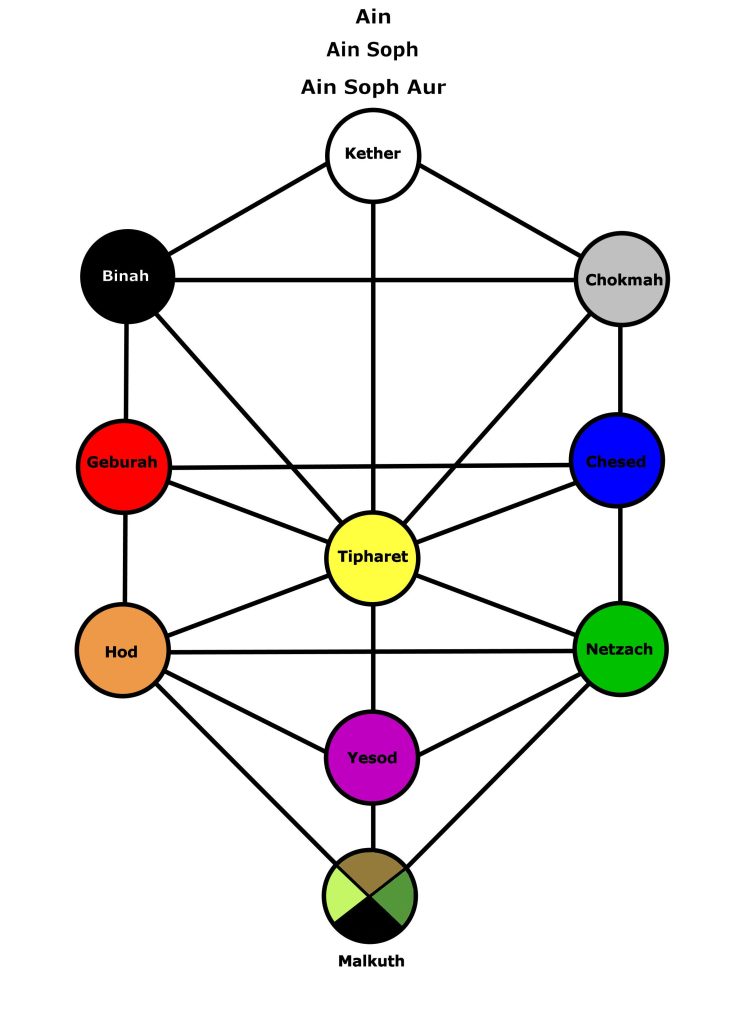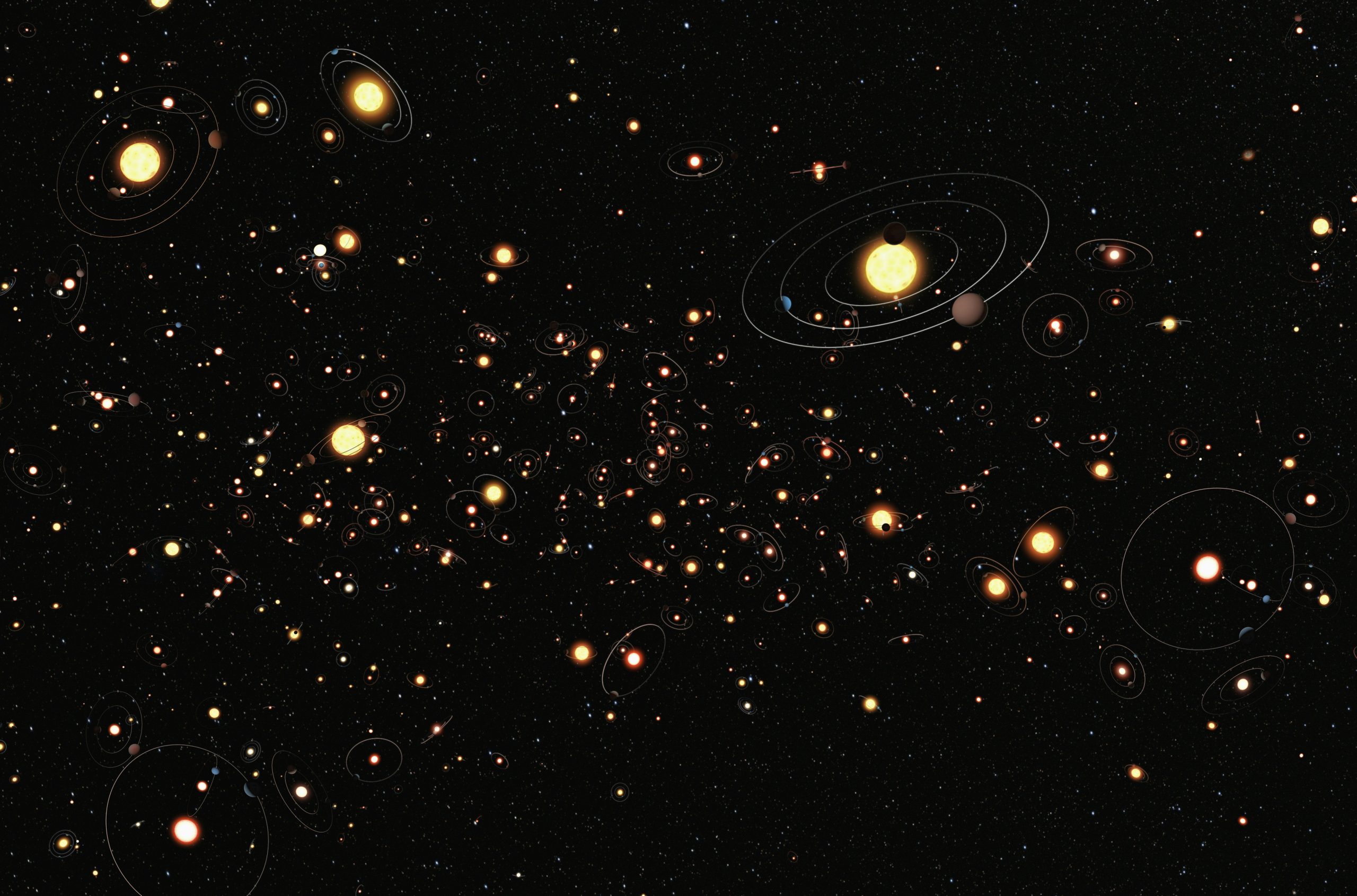Many areas of occult or magical studies include correspondences that map onto the seven classical planets. Alchemy maps metals. The ancient Greeks associated planets with deities and the Celestial Ladder. The Qabalah maps planets to Sephira on the Tree of Life. On a mundane level, the days of the week map as well. In this post, I’m going to describe some of these planetary correspondences. For some information on how these correspondences relate to other systems, see my post on Cosmic Maps.
First, I will provide some definitions. Second, I’m going to lay out a chart. Third, I will discuss each set of correspondences, including some traditional knowledge and my own interpretations. While I break the discussion into sections, note that there is overlap. For example, there is a section on deities, but they are also mentioned in the section on Qabalah.
Definitions
According to Britannica, the sidereal period is:
the time required for a celestial body within the solar system to complete one revolution with respect to the fixed stars—i.e., as observed from some fixed point outside the system. The sidereal period of a planet can be calculated if its synodic period (the time for it to return to the same position relative to the Sun and Earth) is known; the sidereal period of the Moon or an artificial satellite of Earth is the time needed for it to return to the same position against the background of stars
According to Britannica, the synodic period is:
the time required for a body within the solar system, such as a planet, the Moon, or an artificial Earth satellite, to return to the same or approximately the same position relative to the Sun as seen by an observer on the Earth. The Moon’s synodic period is the time between successive recurrences of the same phase; e.g., between full moon and full moon. The synodic period of a planet is the time required for the Earth to overtake it as both go around the Sun—or, in the case of fast-moving Mercury or Venus, for the planet in question to overtake the Earth. The synodic period of an artificial satellite of the Earth is measured between its conjunctions (closest apparent approaches) with the Sun.
Chart
| 1 | 2 | 3 | 4 | 5 | 6 | 7 | |
|---|---|---|---|---|---|---|---|
| Planet | Saturn | Jupiter | Mars | Sun | Venus | Mercury | Moon |
| Sidereal Cycle | 29.5 years | 12 years | 687.1 days | 365.25 days | 224.7 days | 88 days | 27.3 days |
| Synodic Month | 378 days | 399 days | 780 days | 584 days | 116 days | 29.5 days | |
| Celestial Sphere | 7 | 6 | 5 | 4 | 3 | 2 | 1 |
| Deity | Kronos | Zeus / Jupiter | Ares / Mars | Helios / Sol | Aphrodite / Venus | Hermes / Mercury | Selene / Luna |
| Sephiroth | Binah | Chesed | Geburah | Tiphareth | Netzach | Hod | Yesod |
| Metal | Lead | Tin | Iron | Gold | Copper | Mercury | Silver |
| Day | Saturday | Thursday | Tuesday | Sunday | Friday | Wednesday | Monday |
| Chakra | Crown | Third Eye | Throat | Heart | Solar Plexus | Genitals | Root |
| Planetary Hour | 1 | 6 | 4 | 2 | 7 | 5 | 3 |
| Olympic Spirit | Aratron | Bethor | Phaleg | Och | Hagith | Ophiel | Phul |
Planets
The chart orders planetary correspondences by sidereal cycle from longest to shortest. This is not the same as the distance from Earth to the celestial body. In school, we learned the order of the planets from the sun, but the sidereal and synodic periods relate to our viewpoint from Earth.
Celestial Spheres
The order of the inner planets in the celestial spheres was in dispute. There were several different organizations, but this is the most well-known or typical. It mirrors the sidereal cycle. Remember that the inner, or classical, planets are those that can be seen with the naked eye. The sun and the moon are included in the list of planets even though they aren’t planets. They are celestial objects that move in a regular pattern. Our ancestors grouped them with the other wanderers.
Deities
The order of the deities maps to their associated planets. Each planet-deity pair were connected because of the attributes of the deity.
- Selene is the goddess of the Moon. Unlike other goddesses who were associated with the moon, Selene is the personification of the moon.
- The planet Mercury is the fastest planet. The god Mercury (Hermes in Greek) is often depicted with winged feet and was a messenger. These two speedsters were tied together.
- Venus/Aphrodite -The clouds around Venus make it the brightest object in the sky after the sun and the moon. The clouds reflect the light of the sun like a mirror. Mirrors are one of the symbols of the goddess Venus, along with roses, scalloped shells, and doves.
- Helios (Roman: Sol) rules over the sun. Mythology showed Helios driving a chariot, carrying the sun across the sky. This pairing is pretty straightforward.
- The planet Mars has a reddish appearance. This is the color of blood and was ruled over by the god of war, Mars (Ares in Greek).
- Zeus (Roman: Jupiter) rules the planet Jupiter. The king of the gods and the largest planet are mapped together.
- Kronos (Roman: Saturn) maps to the planet Saturn. Both the god and the planet were viewed as distant and cold.
Sephira

The planets map to Sephira on the Qabalistic Tree of Life, working from Yesod to Binah. In addition, Chokmah is associated with Neptune, and Kether with Pluto. Here are alternate names for these Sephira. Keep in mind that there are hundreds of correspondences with the Tree of Life.
- Yesod – Foundation
- Binah – Understanding
- Chesed – Kindness
- Geburah – Discipline
- Tiphareth – Glory
- Netzach – Victory
- Hod – Splendor
Chakras

This mapping clarifies questions I had about the order of the deities in the Celestial Ladder. I do have additional comments and some of the pairings, to enhance my own understanding, as follows:
- Kronos/Crown – Kronos is the father, originating and most ancient. For that reason, he is more distant but also the most connected because he has the widest viewpoint. I see how the crown and Kronos make sense together.
- Helios/Heart – Helios fits well at the heart/center. In the Aurum Solis magical tradition, the heart is where the Orbis Solis is placed, and the golden sun is visualized.
- Selene/Root – In typical tarot, the Moon relates to our subconscious, innermost selves. Our root chakra represents our survival, the home of our most basic needs. I see a connection here.
- Ares/Throat – If I order these by associations other than the sidereal cycle, etc., I’d want to put Hermes at the Throat chakra, for communication. On further thought, I can see Ares as a guide for us going forth into the world and expressing our needs and desires. That takes bravery. This makes sense on a deeper level than the Hermes-communication relationship.
Metals
Alchemy has a rich set of symbolism. Much of the artwork contains multiple layers of meaning associated with its processes and philosophy. Each metal maps to a stage in the alchemical process. See https://www.centreofexcellence.com/7-alchemy-metals-symbolisms/
- Lead – Its density and heaviness represent the raw material at the beginning of all alchemical processes.
- Tin — Symbolizes the malleability of the soul and the quest for wisdom.
- Iron — Symbolizes strength. Weapons were made from iron, and this led to an association with Mars.
- Gold — The incorruptible metal is the symbol of the “Great Work” of transmuting the base into the noble. It was the end goal of the alchemical process, representing perfection.
- Copper — Represents the power to harmonize opposites, since it was believed to come from a mix of fire and water.
- Mercury — Quicksilver is a liquid at room temperature. It symbolizes the changeability of the alchemical process. It was considered the “First Matter,” which formed all other metals.
- Silver — Symbolizes receptivity and intuition. It represents the subconscious and the divine feminine.
Days
Some of the names of days in English come from the Norse or Germanic pantheons, but they are still connected to the Greek or Roman equivalents. The Norse deities map to these days:
- Tyr — Tuesday
- Woden (Odin) — Wednesday
- Thor — Thursday
- Freya — Friday
Planetary Hours
Planetary hours are used in many magical traditions to help align spellwork with planets and deities. Day hours are calculated by dividing the time from sunrise to sunset into 12 to determine the length of an “hour.” The length of night hours is determined using the time from sunset to sunrise. The planet that rules the days is also the ruler for the first hour of daylight. After that, the hours are ruled sequentially in the order given.
Olympic Spirits
I added the Olympic Spirits from the Arbatel of Magic because it interests me and because it fits. There is also a lot of information on these in the Planetary Magick book by Dennings & Phillips. The Arbatel can be found online for free at several sites. Try http://www.labirintoermetico.com/06Numerologia_Cabala/Arbatel_Of_Magick.pdf
Other References
The Mystic Foundation by Christopher Penczak
Planetary Magick: Invoking and Directing the Powers of the Planets by Melita Denning and Osborne Phillips
Practical Planetary Magic: Working the Magic of the Classical Planets in the Western Esoteric Tradition by Sorita D’Este and David Rankine
Wheels of Life: A User’s Guide to the Chakra System by Judith Anodea
The Path of Alchemy: Energetic Healing & the World of Natural Magic by Mark Stavish
The Emerald Tablet: Alchemy of Personal Transformation by Dennis William Hauck


Leave a Reply